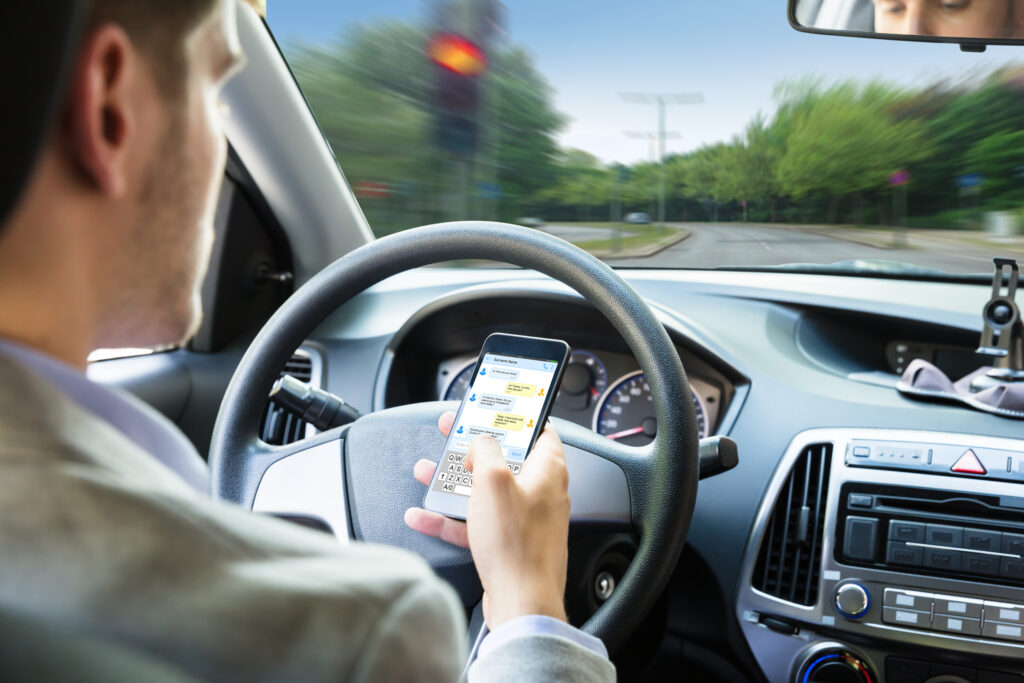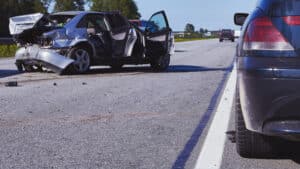Written By: Christopher B. Dolan and Taylor French
Beginning July 1, 2021, California drivers will face increased penalties for using handheld devices while operating a motor vehicle. Specifically, a driver convicted of violating California’s laws prohibiting the use of handheld technology will be issued a point on his or her driver’s license under certain circumstances.
In an effort to curb motor vehicle collisions caused by distracted drivers, California has enacted several laws throughout recent years restricting drivers’ use of handheld devices while driving.
In 2008, a California law went into effect prohibiting all drivers from using a handheld wireless phone while operating a motor vehicle. In 2009, California’s Wireless Communications Device Law went into effect, banning drivers from writing, sending, or reading text messages while operating a motor vehicle.
In 2017, California law went a step further, prohibiting drivers from holding a cell phone while driving. The 2017 law made it so that a driver’s phone must be mounted on the windshield or center console rather than in a driver’s hand. The only permissible actions on the device are a finger tap or a single swipe. As of 2017, drivers could no longer use their cell phones while driving to navigate map apps or utilize music apps. A driver 18 years of age or younger, however, is prohibited from driving while using a cell phone, regardless of whether it is being used hands-free.
Currently, the penalty for failing to use hands-free technology while operating a vehicle amounts to 162 dollars – a relatively small fine for an activity that can have fatal consequences for those on the road. Indeed, a violation for driving while using a cell phone carries the lowest base fine for any violation of the Vehicle Code. The only other violation with a comparable penalty is the failure of a bus driver or bus passenger to wear a seatbelt. Moreover, existing law provides that drivers cannot be issued a point on their record for violations of hands free device laws.
California’s new law, however, establishes that a driver convicted of a distracted driving offense will be issued a point on his or her record for each conviction occurring within thirty-six hours of a prior conviction for the same offense. Points are used by the Department of Motor Vehicles to determine whether a driver should be considered a negligent operator.
What is the consequence of being considered a negligent operator? The DMV may suspend or revoke a negligent operator’s driving privilege. Additionally, insurers may increase a driver’s insurance rate depending on the number of points on the driver’s record. So, in effect, drivers who continue to utilize handheld devices while driving will not only face monetary fines, but they could also potentially lose their driving privileges or suffer increased insurance rates.
An individual with four or more points in 12 months, six points in 24 months, or eight points in 36 months is considered a negligent operator. Except for those issued for driving under the influence, points will remain on a driver’s record for a total of 36 months. The Department of Motor Vehicles can issue points on a driver’s record for various violations of the Vehicle Code, including speeding, crossing a double line, or making illegal U-turns.
AB 47, the bill increasing the penalties for distracted driving offenses to include a point on a driver’s record, unanimously passed both the Senate and Assembly this summer and was signed by Governor Gavin Newsom in October. The bill’s author, Assemblymember Tom Daly, explained the need for the increased penalties:
“Driving while using a cell phone is a serious safety issue. In 2017, there were 243,760 distracted driving offenses in California related to cell phone use. During that same year, there were 932 collisions – 31 of which were fatal – where distracted driving due to cell phone use was determined as the factor”
“Currently, driving while using a cell phone results in a small fine (oftentimes less than a parking ticket), but it has not proven to change behavior. For example, a 2016 study found 7.6% of all drivers were seen to be using their phone while driving, compared to 5.4% in 2015. This change marks a 2.2% increase. This bill elevates a distracted driving citation to the same status as other dangerous driving violations, such as speeding or running a red light, helping discourage people from taking part in this dangerous behavior.”
Hopefully, moving forward with the new penalties in effect, drivers will consider the increased ramifications of driving while using a cell phone and turn their focus away from their devices and onto the road and their surroundings. Doing so would serve to not only protect the drivers themselves but all other individuals on the road, decreasing vehicle collisions and saving lives.










